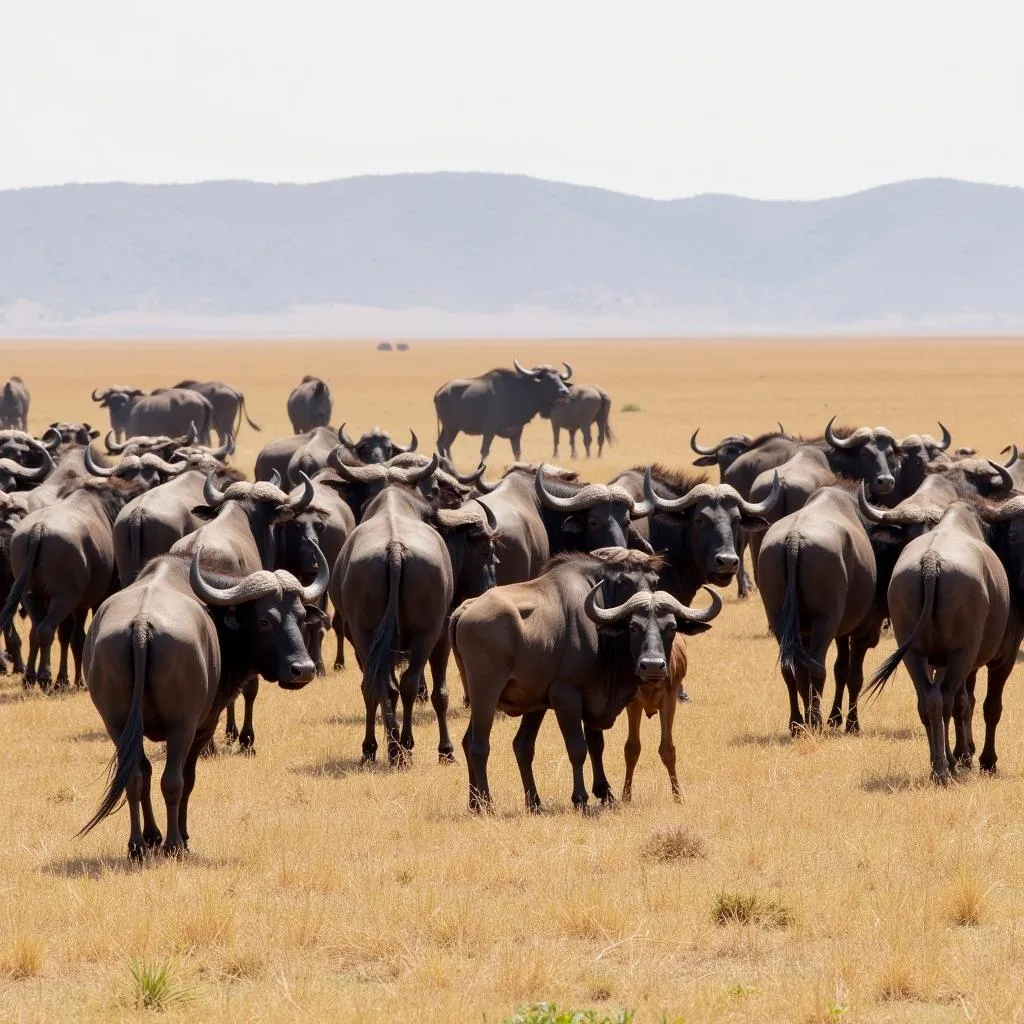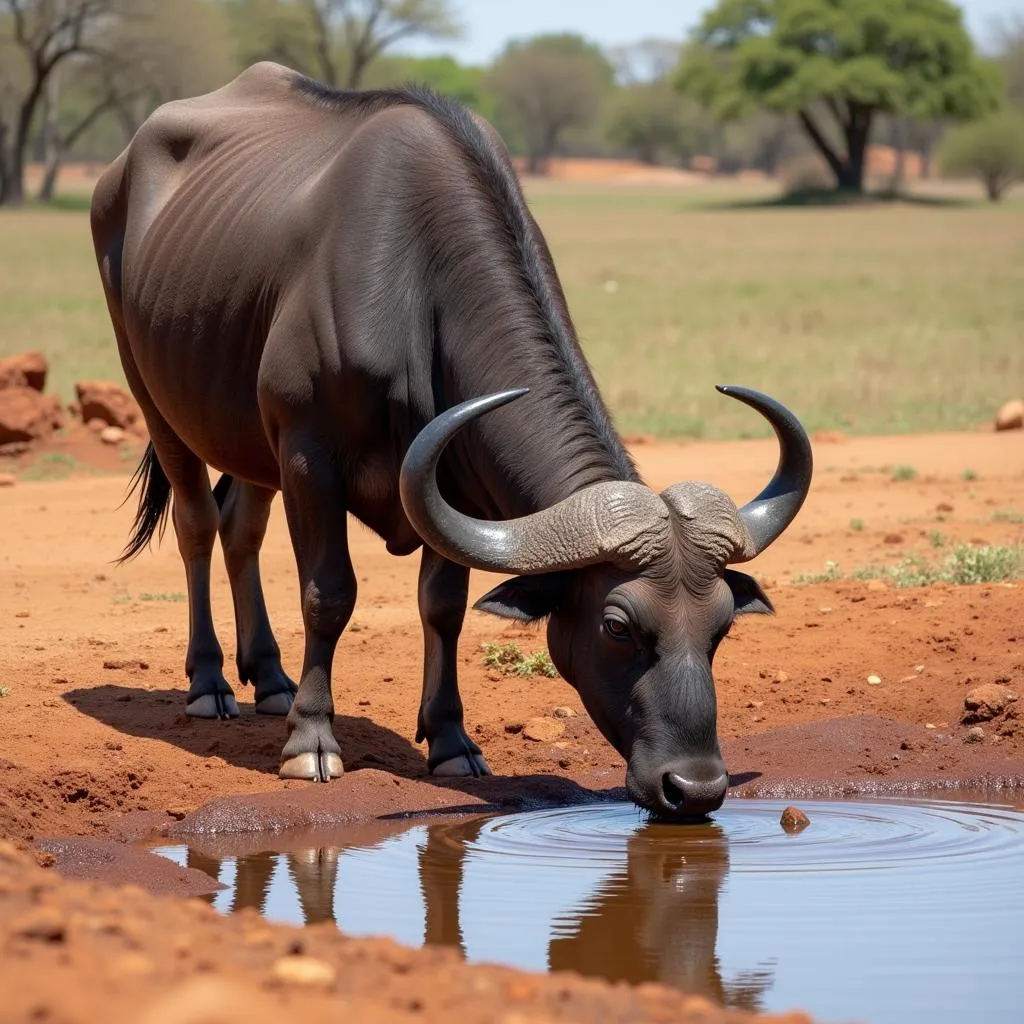African Buffalo Extinction Status: A Closer Look
The African buffalo, a powerful and iconic grazer of the African savanna, is a sight to behold. But what is the African Buffalo Extinction Status, and are these magnificent creatures truly safe? While not currently endangered, African buffalo face a number of threats that are impacting their populations. This article delves into the conservation status of the African buffalo, the challenges they encounter, and the efforts being made to safeguard their future.
Understanding African Buffalo Populations
There are several distinct types of African buffalo, including the forest buffalo and the savanna buffalo. Savanna buffalo are further categorized into several subspecies. Understanding their numbers requires looking at each group:
- Savanna Buffalo: While overall considered “Least Concern” by the International Union for Conservation of Nature (IUCN), savanna buffalo populations vary widely across their range. Some regions have stable numbers, while others have experienced declines.
- Forest Buffalo: Smaller and more reclusive than their savanna relatives, forest buffalo are classified as “Near Threatened” by the IUCN. Their populations are more fragmented and vulnerable to habitat loss and hunting pressure.
 African Buffalo Herd on Savanna
African Buffalo Herd on Savanna
Threats to African Buffalo Survival
Several key factors are influencing the African buffalo extinction status and causing concern among conservationists:
- Habitat Loss: As human populations grow and expand, they encroach upon the natural habitats of African buffalo. Conversion of land for agriculture, settlements, and infrastructure development fragments buffalo territories and limits their access to vital resources.
- Disease: African buffalo are susceptible to several diseases, including bovine tuberculosis, rinderpest, and corridor disease. These illnesses can devastate buffalo herds, particularly when coupled with other stressors.
- Hunting and Poaching: While regulated hunting can play a role in sustainable wildlife management, illegal poaching for meat and trophies remains a significant threat, particularly in areas with weak law enforcement.
- Human-Wildlife Conflict: As human populations and buffalo ranges overlap, conflicts can arise. Buffalo may damage crops, leading to retaliatory killings by farmers.
Conservation Efforts and the Future of the African Buffalo
Despite these challenges, there is hope for the African buffalo. Numerous organizations and individuals are dedicated to their conservation:
- Protected Areas: National parks and reserves play a crucial role in safeguarding African buffalo populations and their habitats. These areas provide a safe haven from many of the threats they face.
- Disease Control: Efforts to monitor and control the spread of diseases among buffalo populations are crucial. Vaccination campaigns and careful management strategies help mitigate the impact of outbreaks.
- Anti-Poaching Initiatives: Strengthening law enforcement, raising awareness about the illegal wildlife trade, and engaging local communities in conservation efforts are essential steps in combating poaching.
 African Buffalo Grazing Near Waterhole
African Buffalo Grazing Near Waterhole
The Importance of African Buffalo Conservation
Protecting African buffalo is not just about preserving a single species; it’s about maintaining the delicate balance of the entire ecosystem:
- Keystone Species: African buffalo are considered a keystone species, meaning they have a disproportionately large impact on their environment. Their grazing habits influence vegetation growth, and their presence supports a wide range of other species, from predators to dung beetles.
- Tourism and Livelihoods: Healthy buffalo populations contribute to thriving ecosystems that attract tourists and provide livelihoods for local communities through ecotourism and related industries.
- Cultural Significance: African buffalo hold cultural significance for many indigenous groups across the continent, featuring in their folklore, traditions, and beliefs.
Conclusion
While the African buffalo extinction status is not currently at a crisis point, continued vigilance and conservation efforts are crucial to ensuring these magnificent creatures continue to roam the African savanna for generations to come. By understanding the threats they face and supporting initiatives that protect them, we can all play a part in securing the future of the African buffalo.
FAQ:
- Are African buffalo dangerous to humans? Yes, African buffalo are wild animals and should be treated with caution and respect. They are known for their unpredictable behavior and can be aggressive, especially when threatened.
- What is the average lifespan of an African buffalo? In the wild, African buffalo can live for 15 to 25 years.
- How many African buffalo are left in the world? Estimating exact numbers is difficult, but it’s believed there are several hundred thousand savanna buffalo and a much smaller population of forest buffalo remaining.
- What is being done to help African buffalo? Conservation efforts include establishing protected areas, controlling disease outbreaks, combating poaching, and working with local communities to reduce human-wildlife conflict.
- How can I help protect African buffalo? You can support conservation organizations, raise awareness about their plight, and choose sustainable travel options that benefit wildlife and local communities.
Want to learn more about the fascinating wildlife of Africa? Check out our article on the indian lion vs african lion.
For any support regarding African wildlife or travel inquiries, reach out to us at:
Phone: +255768904061
Email: kaka.mag@gmail.com
Address: Mbarali DC Mawindi, Kangaga, Tanzania.
We have a dedicated customer support team available 24/7.

